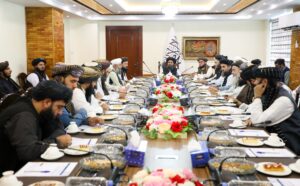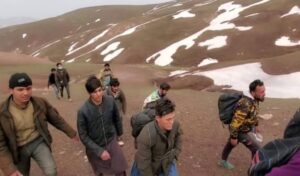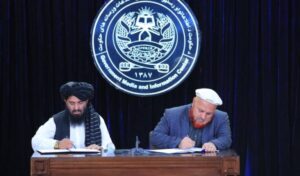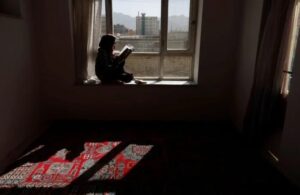KABUL (SW) – Despite many limitations and challenges faced by the youths in Afghanistan, some have embarked on ambitious projects to create smart robots, aiming to solve problems and bring solutions to a world filled with difficulties.
This report features interviews with two young innovators who have designed robots in different areas of robotics technology. Despite the numerous challenges and obstacles in their way, these young individuals have managed to complete the initial structure of their robots and, amidst adversity, have sparked hope for a better future.
Sayed Mujtaba Ahmad, a 22-year-old student from Kabul studying computer science at a private university, was inspired to take action after observing the daily challenges faced by people with disabilities. With a heart full of motivation and unwavering determination, he started developing a robot designed to assist in reducing the problems of disabled individuals.
He says, “This robot can operate both automatically and manually; it can be controlled via voice. People with disabilities who cannot use their hands or legs can control it using their voice.”
Despite facing economic challenges and a lack of resources, Mujtaba has showcased the first prototype of his robot, hoping to ease the difficulties of disabled people. “I spent 15,000 afghanis on this project, and if a citizen wants to buy it, they can purchase it for about 8-9 thousand afghanis.”
Similarly, Ahmad Yama, a 22-year-old from Maidan Wardak with a bachelor’s degree in computer science, was motivated by the difficulties faced by farmers in planting seeds. He developed a robot designed to simplify and speed up the seed-sowing process.
“This robot has a tank that holds the seeds, and it shows the amount of seed to be sown in specific areas. We also have a robot assistant, which we can send along when the area is far or when the seeds or battery run out. When the materials are finished, we use the assistant robot to continue the task,” he adds.
Ahmad plans to build another robot in the future that will assist farmers in watering their fields. “I want to create a robot for irrigation that can water the land three times a week. It will have a reservoir and use a drip irrigation system.”
On the other hand, Mohammad Qasim Qiyam, a computer science instructor at Kabul Polytechnic University, points out that despite the lack of resources, young people have achieved great success in international programs. “We participate in international competitions; students are introduced to programming contests. This year, our students have ranked first or second in an international programming competition called ICPC. Two years ago, our students ranked first in this competition.”
Sayed Mohsen Sadaat, the head of research and innovation at the Ministry of Technical and Vocational Education Authority, mentions that this year, they have launched programs to implement projects, offer online training, and enhance the capacity of young people. “This year, two programs will be held, one at the central level and one nationwide, to enhance the capacity of youths through online training. This program is not limited to robotics but extends to other fields where young people can innovate.”
Last month, the National Innovation Exhibition was held in Kabul, showcasing 318 projects from 21 provinces in technical, robotic, and agricultural fields.






